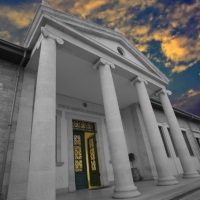Virtual Reality (VR) and Augmented Reality (AR) are having a moment, but are far from being widely adopted. Companies release new Head Mount Devices (HMD), which will soon become as affordable as a desktop computer. Although driven by the gaming community, it is evident that their prospect is far from being fully exploited. New applications and content are necessary for this technology being adopted.
“For at least the first two years, VR will be for hardcore gamers and enthusiasts who are willing to invest in high-end computers capable of running the Rift.” Palmer Luckey, Oculus Founder.
Virtual Museums (VM), on the other hand, have a lot more to benefit from VR and AR, than just being a real museum transposed to the web, or just an archive or database of 3D digital objects. They should provide tools so that to prolongue the museum experience while attracting visitors and enhancing their physical visit. Underwater Cultural Heritage provides an excellent prospect for VM, as it is inherently unreachable by the large majority of people.
“iMARECULTURE envisages to literally change the way we look, observe, understand and interact with our underwater cultural heritage”, Dimitrios Skarlatos, project coordinator.
Starting on 1st November, the iMARECULTURE will address the challenges of bringing the underwater CH into public attention as something more tangible, while raising awareness about European identity. Project aims to overcome the limitations of time and space using VR & AR, along with Serious Games. Several actions and tasks will help to the goal, such as two Serious Games with interactive storytelling, Dry visits in museums using Holographic screens, HMDs or VR caves, and AR in UW tablets for divers in underwater archaeological parks.
“At the formal lunch at UNESCO’s top floor restaurant, I ended up doing an impromptu presentation of iMARECULTURE to all speakers and distinguished UNESCO officials there.”, Alexandre Monteiro, Invited speaker at the International Meeting on the Protection of Underwater Cultural Heritage Sites, UNESCO Headquarters, Paris (22-23 September 2016).
Project’s kick-off meeting was held in Limassol, hosted by the coordinator, Cyprus University of Technology, 2-4 November 2016. Seventeen participants, from Masaryk University (CZ), 3D Research s.r.l. (IT) , Ministero dei Beni e delle Attivita Culturali e del Turismo - Istituto Superiore per la Conservazione ed il Restauro (IT), University of Sarajevo (BA), University of Cyprus (CY), Universidade Nova de Lisboa (PT), HOLOGRAFIKA Hologrameloallito Fejleszto es Forgalmazo KFT (HU), Aix-Marseille University (FR) and Concordia University (CA), Pierides Foundation (CY), attended the kick off meeting and General Assembly of the project. An open session to public was held on 3rd November, as an information day, while at the same time assisted participants to have a better overview of each others activities and strengths. The rector of Cyprus University of Technology, Prof. A. Anayiotos, welcomed the participants and guests, and highlighted the impact of CH and CH supporting projects in society. The Dean of Engineering faculty, Prof. C. Chrysostomou, emphasized the importance of H2020 research and innovation projects for the faculty and university in general, while offering his support for the duration of the project. Project’s coordinator, Dr. D. Skarlatos, presented the project’s aims and scope, as well as the necessary actions to attain it. Following, all partners presented their research interests and their role in the project. The open session was broadcasted live in YouTube.
The remaining of the day and the next day, attending partners had the opportunity to discuss various administrative, financial aspects of the project, following several details about research and implementation tasks of the project. Over the next days, many partners visited Thalassa museum, to get acquainted with the museum and the replica of Kyrenia shipwreck. The kick-off meeting ended on 4th November, with next ordinary meeting being scheduled for April 2017.
For more information about this topic, please contact Prof. Dimitrios Skarlatos at +357 25002360 or email at dimitrios.skarlatos@cut.ac.cy or visit www.imareculture.eu
Εδώ φοιτούμε. Στο Τεχνολογικό Πανεπιστήμιο Κύπρου, το Πανεπιστήμιο της καρδιάς μας!
Virtual Reality (VR) and Augmented Reality (AR) are having a moment, but are far from being widely adopted. Companies release new Head Mount Devices (HMD), which will soon become as affordable as a desktop computer. Although driven by the gaming community, it is evident that their prospect is far from being fully exploited. New applications and content are necessary for this technology being adopted.
“For at least the first two years, VR will be for hardcore gamers and enthusiasts who are willing to invest in high-end computers capable of running the Rift.” Palmer Luckey, Oculus Founder.
Virtual Museums (VM), on the other hand, have a lot more to benefit from VR and AR, than just being a real museum transposed to the web, or just an archive or database of 3D digital objects. They should provide tools so that to prolongue the museum experience while attracting visitors and enhancing their physical visit. Underwater Cultural Heritage provides an excellent prospect for VM, as it is inherently unreachable by the large majority of people.
“iMARECULTURE envisages to literally change the way we look, observe, understand and interact with our underwater cultural heritage”, Dimitrios Skarlatos, project coordinator.
Starting on 1st November, the iMARECULTURE will address the challenges of bringing the underwater CH into public attention as something more tangible, while raising awareness about European identity. Project aims to overcome the limitations of time and space using VR & AR, along with Serious Games. Several actions and tasks will help to the goal, such as two Serious Games with interactive storytelling, Dry visits in museums using Holographic screens, HMDs or VR caves, and AR in UW tablets for divers in underwater archaeological parks.
“At the formal lunch at UNESCO’s top floor restaurant, I ended up doing an impromptu presentation of iMARECULTURE to all speakers and distinguished UNESCO officials there.”, Alexandre Monteiro, Invited speaker at the International Meeting on the Protection of Underwater Cultural Heritage Sites, UNESCO Headquarters, Paris (22-23 September 2016).
Project’s kick-off meeting was held in Limassol, hosted by the coordinator, Cyprus University of Technology, 2-4 November 2016. Seventeen participants, from Masaryk University (CZ), 3D Research s.r.l. (IT) , Ministero dei Beni e delle Attivita Culturali e del Turismo - Istituto Superiore per la Conservazione ed il Restauro (IT), University of Sarajevo (BA), University of Cyprus (CY), Universidade Nova de Lisboa (PT), HOLOGRAFIKA Hologrameloallito Fejleszto es Forgalmazo KFT (HU), Aix-Marseille University (FR) and Concordia University (CA), Pierides Foundation (CY), attended the kick off meeting and General Assembly of the project. An open session to public was held on 3rd November, as an information day, while at the same time assisted participants to have a better overview of each others activities and strengths. The rector of Cyprus University of Technology, Prof. A. Anayiotos, welcomed the participants and guests, and highlighted the impact of CH and CH supporting projects in society. The Dean of Engineering faculty, Prof. C. Chrysostomou, emphasized the importance of H2020 research and innovation projects for the faculty and university in general, while offering his support for the duration of the project. Project’s coordinator, Dr. D. Skarlatos, presented the project’s aims and scope, as well as the necessary actions to attain it. Following, all partners presented their research interests and their role in the project. The open session was broadcasted live in YouTube.
The remaining of the day and the next day, attending partners had the opportunity to discuss various administrative, financial aspects of the project, following several details about research and implementation tasks of the project. Over the next days, many partners visited Thalassa museum, to get acquainted with the museum and the replica of Kyrenia shipwreck. The kick-off meeting ended on 4th November, with next ordinary meeting being scheduled for April 2017.
For more information about this topic, please contact Prof. Dimitrios Skarlatos at +357 25002360 or email at dimitrios.skarlatos@cut.ac.cy or visit www.imareculture.eu

